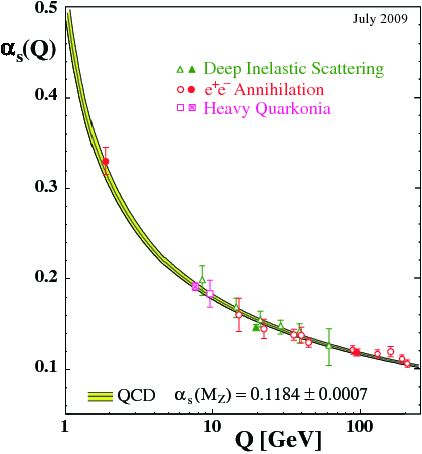
Quantum Chromodynamics (QCD) is universally accepted today as the theory of strong interactions. Nevertheless, many conceptual questions, like those concerning the properties of the quark gluon plasma, the factorization of observables into non-perturbative and perturbative parts, the applicability of effective theories like non-relativistic QCD, and the experimental pertinence of instantons, are still unanswered. Furthermore, many free parameters of QCD, like the strong coupling constant αs, the quark masses, and the partonic structure of mesons, baryons and nuclei, have so far only been determined with insufficient precision.
After the shut-downs of LEP, HERA, and the Tevatron, the most insteresting data over the next few years will come from FAIR and the LHC, but also from experiments at the Jefferson Laboratory and RHIC. In order to improve our understanding of QCD, it is necessary to make theoretical predictions for the observed scattering processes that reach or surpass the experimental precision. Due to the large size of the strong coupling constant, this is only possible with calculations that go beyond (the leading order of) perturbation theory. It is equally important to provide the experimentalists with these computations in the form of flexible, user-friendly Monte Carlo programs and to assist them theoretically in the interpretation of individual analyses.

